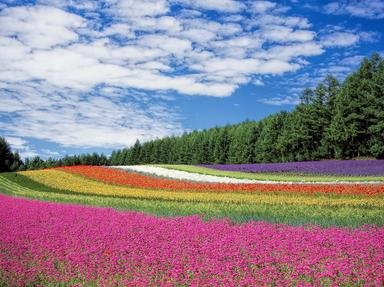Quiz Answer Key and Fun Facts
1. What city in the British Isles has been associated with orange marmalade since the 18th century?
2. Between the 17th and the 19th centuries, orangeries were often built on the grounds of royal and aristocratic residences. In the gardens of which magnificent French royal palace would you find this stunning 17th-century orangery?
3. Though the deep yellow-orange colour of the robes of Buddhist monks is known as saffron, what much less expensive spice (one of the essential ingredients of curry powder) is used to dye them?
4. In which European country, formerly part of the Soviet Union, did the Orange Revolution occur in 2004?
5. This striking, bright orange bird is a specimen of Guianan cock-of-the-rock. Where in the world would you find this creature?
6. A type of fairy tale found in most of Europe and parts of Asia, "The Love for Three Oranges" tells the tale of a prince and three enchanted oranges (or other fruits). What is hidden inside each of the oranges?
7. The beautiful stretch of Mediterranean coast known as Costa del Azahar, or "Orange Blossom Coast", is located near which major city known for its oranges?
8. Used for centuries to make orange art pigments, realgar and orpiment are minerals of what toxic chemical element - well known to readers of detective stories?
9. What common name is given to the delicious, amber-coloured fruit of Rubus chamaemorus, a plant native to the cool regions of the Northern Hemisphere?
10. The royal family of what European country is known as "the Oranges"?
Source: Author
LadyNym
This quiz was reviewed by FunTrivia editor
LeoDaVinci before going online.
Any errors found in FunTrivia content are routinely corrected through our feedback system.

